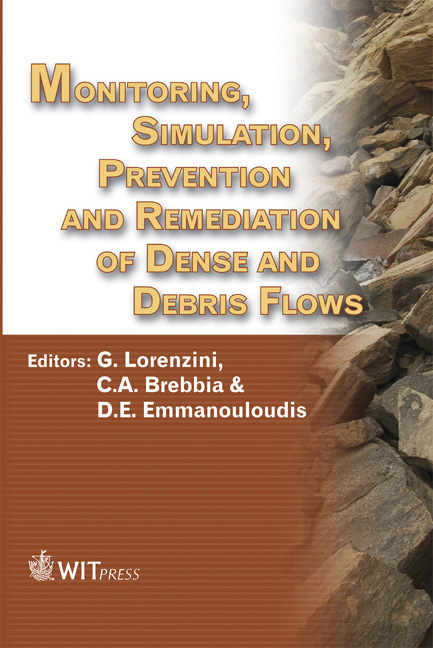Debris Flow Hazards And Emergency Response In Taiwan
Price
Free (open access)
Transaction
Volume
90
Pages
10
Published
2006
Size
2,590 kb
Paper DOI
10.2495/DEB060301
Copyright
WIT Press
Author(s)
C.-Y. Chen, W.-C. Lee & F.-C. Yu
Abstract
According to the field investigation by Soil and Water Conservation Bureau (SWCB) after the M7.6 Chi-Chi earthquake, there are 1,420 streams prone to initiating debris flow. The initiated slopeland related hazards are correlated to the geological conditions, topographic elevation, engineering design and human induced effects in addition to the strong seismic effects. The study summarized the debris flow and landslide hazards and their casual factors using field investigation of the post seismic hazards in Taiwan. The emergency responses of the National Science & Technology Center for Disaster Reduction (NCDR) and governmental departments for typhoon induced flood and debris flow are introduced herein. Through the use of the active response mechanism, the casualties from typhoon-induced hazards are reduced and further enhancements for hazard mitigation by the hazard characteristics are suggested. Keywords: debris flow, landslide, emergency response, Chi-Chi earthquake, Taiwan. 1 Introduction According to statistics from the Central Weather Bureau, the total economic loss of typhoon induced natural hazards is estimated to be around 174 billion Taiwan dollars as an average each year from 1980 to 1998. Overall economic loss increased following the M7.6 Chi-Chi earthquake in 1999 until recent years. Typhoon Toraji (in 2001) caused a loss of 7,700 billion, Typhoon Nari cost (in 2001) 9,000 billion, and Typhoon Mindulle and the following storm (in 2004) resulted in 8,900 billion of economic loss.
Keywords
debris flow, landslide, emergency response, Chi-Chi earthquake, Taiwan.





